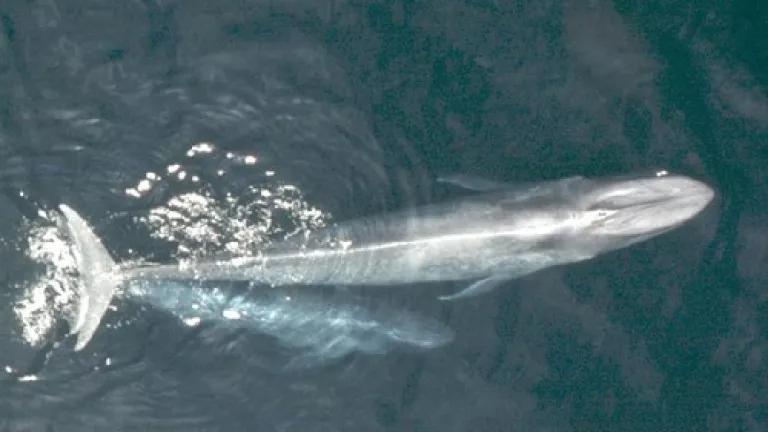
The U.S. Navy refuses to listen to the California Coastal Commission, the concerned public, or even its own scientists, all of whom have warned that, without increased mitigation, the Navy’s planned training and testing activities will cause grave harm to marine mammals off the Southern California Coast.
A blue whale mother and calf
The Navy is set to dramatically increase its sonar training and underwater detonations off the Southern California Coast beginning in January 2014. In March, the California Coastal Commission reviewed the Navy’s planned action and unanimously objected to it. The Commission explained that the Navy had not presented enough information to show that it would not heedlessly harm coastal resources in violation of the Coastal Act, and the Commission offered reasonable mitigation measures that took into account the Navy’s need for flexibility while affording greater protection to vulnerable species.
Now the Navy has produced an Environmental Impact Statement that contains none of the Commission’s recommendations.
Although the Navy says that it is open to negotiation, in a recent letter it makes clear that it refuses to abide by any of the state’s recommended mitigation measures, such as avoiding training in the state’s marine protected areas or in globally important foraging habitat for the endangered blue whale. The Navy’s brazen disregard for the vulnerable marine environment in which it operates comes in the wake of several new studies showing that its Southern California activities are harming marine mammals, such as blue whales and beaked whales, far more than we previously knew. (For a summary of the science, you can read my blog post or a recent letter from NRDC and the California Coastal Protection Network to the Commission detailing the findings.)
The Navy itself estimates that its planned sonar and underwater detonation activities would kill 130 marine mammals outright, permanently deafen another 1,600, and significantly disrupt feeding, calving and other vital behaviors more than 8.8 million times in the process. In light of the recent research directly documenting the behavioral response of whales to simulated Navy sonar, there is no longer any doubt that as devastating as the Navy’s own numbers are, they remain underestimates. The Navy must finally admit that it is having population-level impacts on baleen and beaked whales: it not only funded the research, its own scientists worked on the studies.
The Navy is stuck in a past era, when we didn’t have the scientific knowledge we do today and were left to speculate about the harm active sonar was having on the marine environment. Its days of hiding behind uncertainty are over. The Coastal Commission has proposed reasonable ways of reducing harm. It’s time for the Navy to listen.
Photo credit: NOAA

